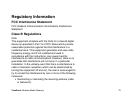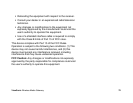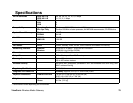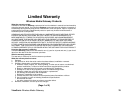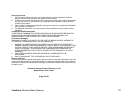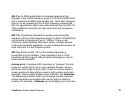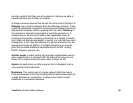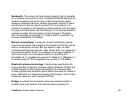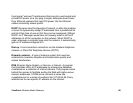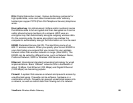ViewSonic Wireless Media Gateway 79
802.11a. An IEEE specification for wireless networking that
operates in the 5 GHz frequency range (5.725 GHz to 5.850 GHz)
with a maximum 54 Mbps data transfer rate. The 5 GHz frequency
band is not as crowded as the 2.4 GHz frequency, because the
802.11a specification offers more radio channels than the 802.11b.
These additional channels can help avoid radio and microwave
interference.
802.11b. International standard for wireless networking that
operates in the 2.4 GHz frequency range (2.4 GHz to 2.4835 GHz)
and provides a throughput of up to 11 Mbps. This is a very
commonly used frequency. Microwave ovens, cordless phones,
medical and scientific equipment, as well as Bluetooth devices, all
work within the 2.4 GHz frequency band.
802.11g. Similar to 802.11b, but this standard provides a
throughput of up to 54 Mbps. It also operates in the 2.4 GHz
frequency band but uses a different radio technology in order to
boost overall bandwidth.
Access point. A wireless LAN transceiver or “gateway” that can
connect a wired LAN to one or many wireless devices. Access
points can also bridge to each other. There are various types of
access points and base stations used in both wireless and wired
networks. These include bridges, hubs, switches, and Gateways.
The differences between them are not always precise, because
certain capabilities associated with one can also be added to
another. For example, a Gateway can do bridging, and a hub may



